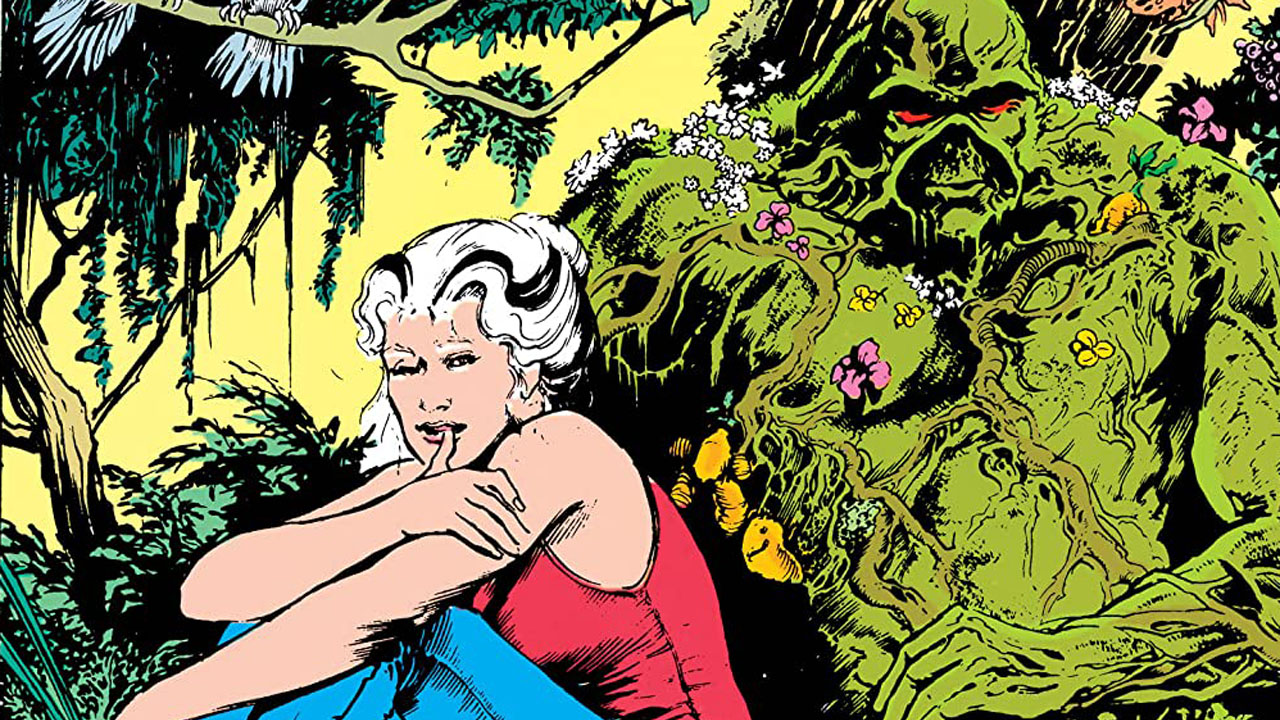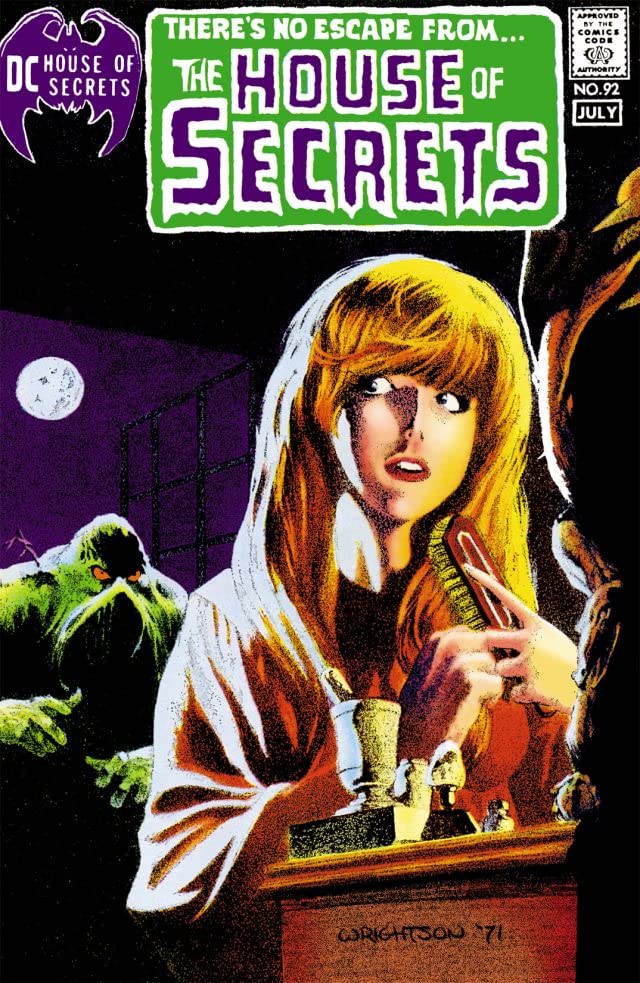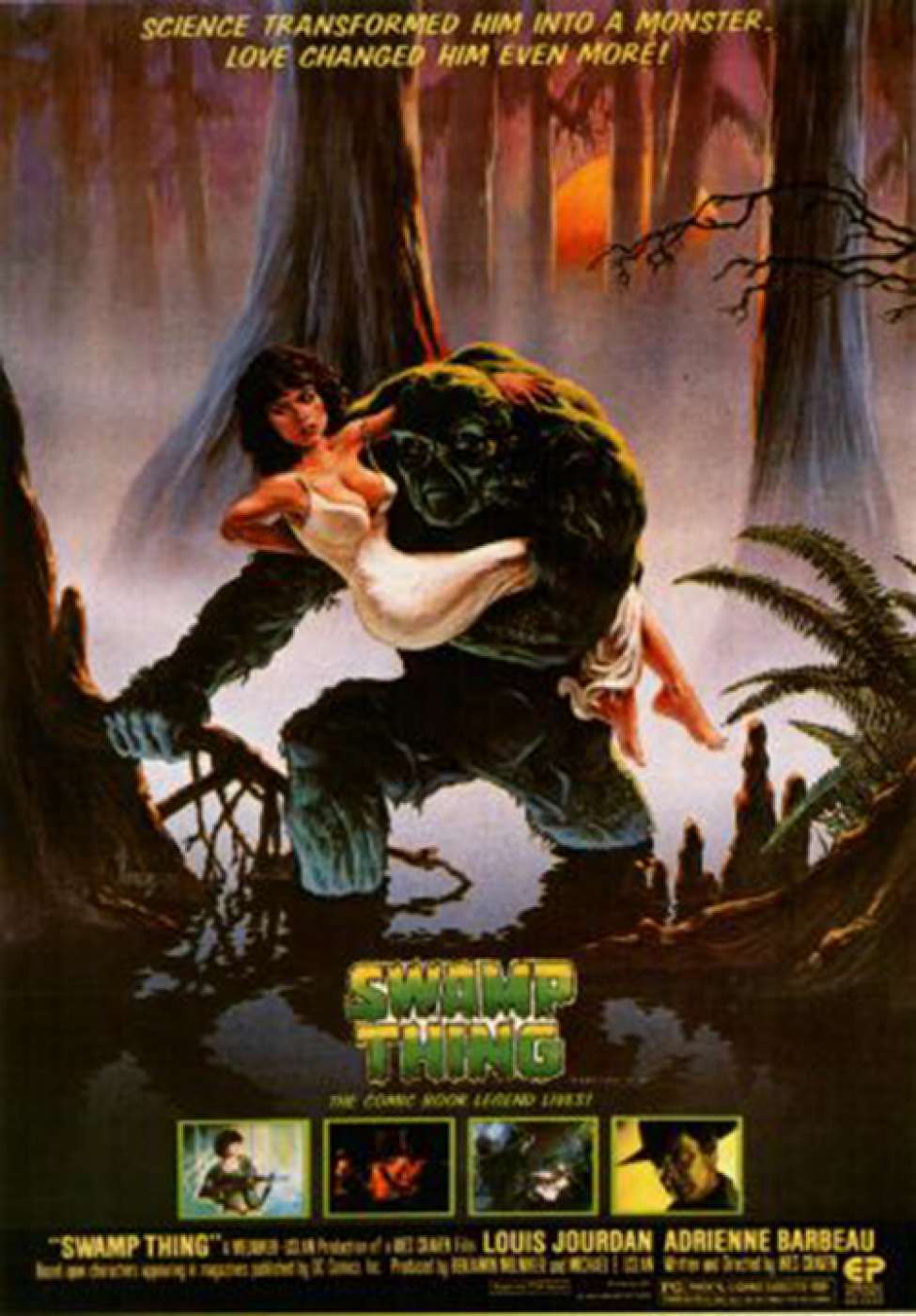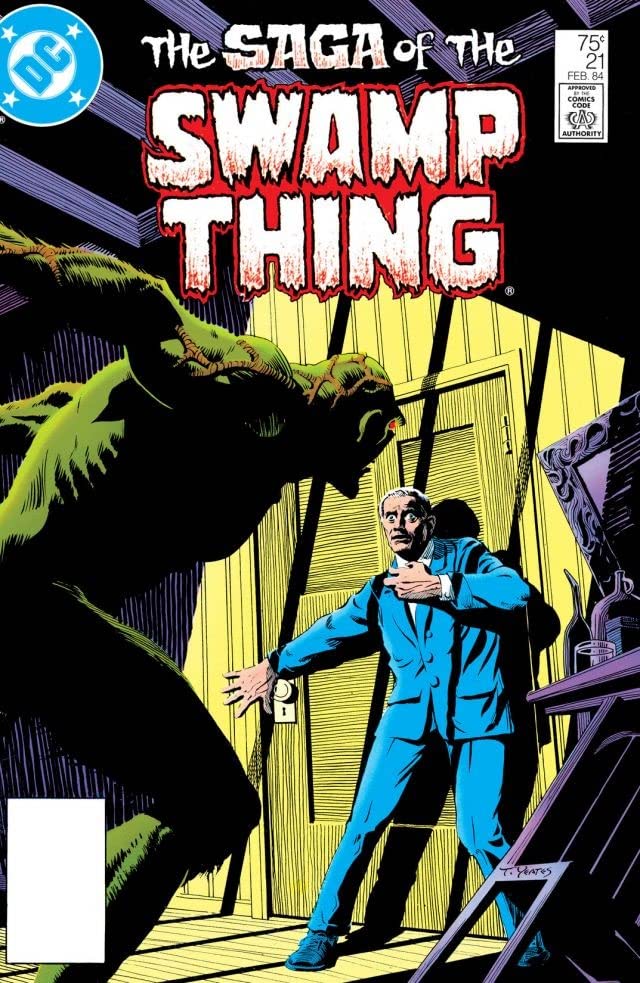The enduring legacy of Swamp Thing
Talking with co-creator Len Wein and others about the humanity of Swamp Thing

Swamp Thing isn't your standard superhero - but that is completely his charm.
Originally created in 1971 by Len Wein and Bernie Wrightson, Swamp Thing grew on readers over the years as a unique figure in DC's comic books - monstrous but humane, hard-to-draw but a favorite among artists, and a fertile place for creators to tell stories they couldn't with DC's more traditional superheroes.
Wein thinks that the character's endurance is because of the humanity beyond the monster.
"The story of Swamp Thing was, initially, a man turned into a monster who's trying to regain his humanity," Wein says. "The one thing I always try to put into my work is as much humanity as possible. I think that's a major factor in the success of Swamp Thing."
Gerry Conway, who was Wein's roommate at the time Swamp Thing was created, worked on the first Swamp Thing series soon after his friend left the comic. The writer agreed that, although Swamp Thing isn't technically human, it's that humanity trapped within a monstrous form that appeals to readers.
"And by humanity, of course, I'm not suggesting he's 'human' as such, but that in his essential existential conflict, he's more 'human' than many of the other 'monster heroes' created during that time period," Conway said.
And, the writer added, Swamp Thing also "looks pretty cool."
Get the best comic news, insights, opinions, analysis and more!
Swamp Thing was originally introduced as Alec Holland, a scientist whose lab exploded while he was working on a formula to restore plant growth to barren wastelands. The injured Alec was covered in the formula and crawled into a nearby swamp, soon emerging as the plant-human hybrid Swamp Thing.
Later, writer Alan Moore changed the character's origin a bit by explaining that Alec Holland had actually died, and Swamp Thing was instead an ancient elemental creature who absorbed Alec Holland's memory and personality.
"But even when Alan decided he wasn't really Alec Holland anymore but simply a sentient plant, there was still vast humanity to the character," Wein said, pointing out that the "elemental" Swamp Thing has even fallen in love.
The concept behind the character was first introduced in a story by Wein for 1971's House of Secrets #92. That story's success led to the creation of the current Swamp Thing in his own ongoing series in 1972. Wein wrote the comic with Bernie Wrightson providing art.
"We were basically doing our own Universal movies," Wein said. "Bernie and I were both huge fans of the old Universe monster movies, so in essence, we were getting a chance to play out our own Universal monster movies.
"We started with those great old '30s movies and figured out how to update them for audiences of the '70s," he said. "We twisted and turned them and made them new for the time. We did the best we could with that."
There have been rumors that friends of Wein, including Conway, approached him and told him the character was too much like Marvel's horror-themed creature Man-Thing, but Wein said that has been exaggerated.
"Well, I mean, people have often come up to me over the years and said that they thought he was too much like Man-Thing, but I think they're wrong," the writer said. "Man-Thing isn't sentient. Unlike Swamp Thing, Man-Thing has lost his humanity entirely. They're really nothing alike at their core."
Swamp Thing was also the subject of a 1982 movie by Wes Craven and two '90s TV shows, one live action and one animated. But Wein said that while the character's appearance in other media may have introduced his name to a more general audience, he doesn't credit them with the character's endurance in comics.
"I don't think the movie ultimately made any difference whatsoever," he said. "I think the character has stood on its own merits. The movie didn't have the tone of the book at all, nor did the TV show."
Wein said he also realizes that even the most compelling comic characters can fade from popularity if they're not given a chance to shine by publishers and comic creators. DC has revived Swamp Thing in his own comic more than once, which was important to his history. But it was a stroke of luck that the creators who handled the character — from Moore to Brian K. Vaughan to Andy Diggle — were among the best in the business.
"For the most part, over the years, it's been by very talented people," Wein said. "My run with Bernie certainly stands up. And then Alan Moore's run, and Rick Veitch's run, were all top-notch stories, which I think kept the audience compelled."
Moore's run of more than 40 issues on the title, with legendary artists like John Totleben, Stephen Bissette and Dan Day, gave Swamp Thing a new lease of life and is still hailed by critics and creators alike. Probably most importantly for the character's endurance, Moore's run gave the character a much deeper mythology, making him part of an ancient community of Swamp Things.
As a result of concepts introduced by Moore, today's Swamp Thing belongs to a group of plant beings known as the Parliament of Trees. They all share a mystical plant plane called the Green. And that mythology is at the heart of the character's most recent revival in Brightest Day, bringing him into the DCU again.
Wein said he loves Swamp Thing being back in the DCU. "Remember, I had him tackle Batman in the seventh issue," Wein said, referring to the classic tale from Swamp Thing #7. "That book has my single favorite shot of the Batman ever drawn. It's a shot Bernie did where Batman's standing on these two chimneys, feet straddled with the wind on his back, so the cape is blowing up against his back and out between his legs. If you look, the cape is probably a mile and a half long, but it's just the greatest visual.
"A lot of people love that story, myself not the least among them," Wein said. "I think people liked seeing Swamp Thing interacting with Batman."
Here now in modern times, Wein tells Newsarama that Swamp Thing will continue to endure if, and only if, the creators give him humanity readers can find commonality with.
"Everybody finds their own unique reason to identify with a character," he said. "You all bring your own experience to the work you read, and you interpret it through your own life. So it's hard for me to say what makes a character popular, except it's a general common core in a lot of people. And I hope Swamp Thing continues to tap into that."
Vaneta has been a freelance writer for Newsarama for over 17 years, covering Marvel and DC, and everything in between. She also works in marketing.






